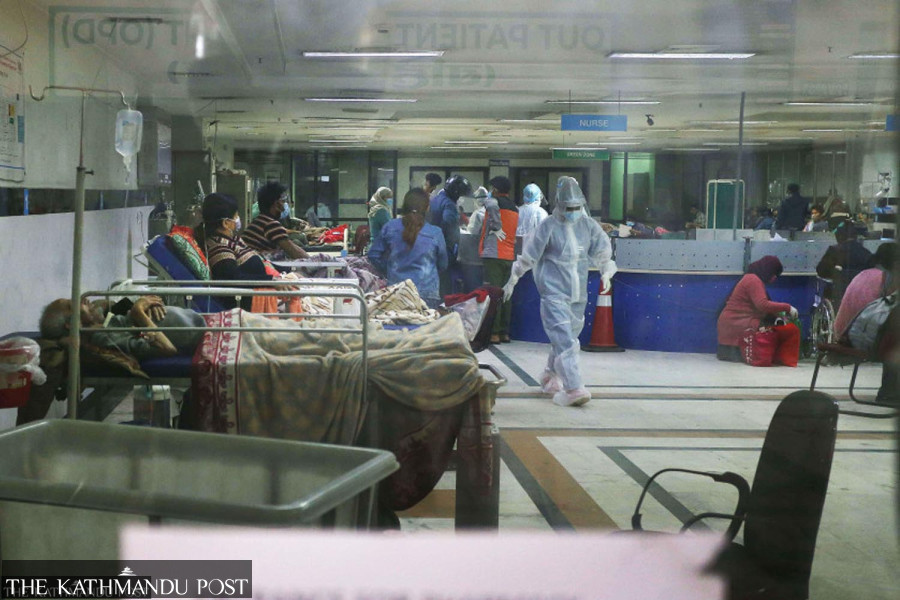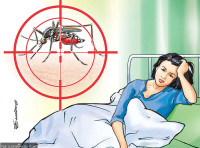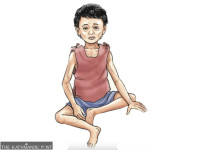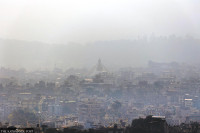Health
Lingering Covid is severely ailing elderly and comorbid people
Change in virus variant or double infection—of seasonal flu and coronavirus—suspected for the rise in serious cases.
Arjun Poudel
Though it is no more a hot topic of discussion, coronavirus is very much present in Nepal.
Health authorities throughout the country stopped active case finding of the Covid-19 over three years ago. But variants of the coronavirus have continued to circulate in communities.
What concerns experts is that elderly people and those with underlying conditions have been getting severe from Covid infection.
“Two patients infected with the virus have been admitted to the intensive care unit of our hospital and five are in the general ward,” said Dr Yuba Nidhi Basaula, director at the Sukraraj Tropical and Infectious Disease Hospital in Teku, Kathmandu. “The number of coronavirus patients has been rising in our hospital in the past few weeks.”
Health authorities across Nepal have stopped active case findings including contact tracing and free testing for all after the second wave of the pandemic subsided in 2021. Hospitals have been carrying out tests only on those seeking polymerase chain reaction (PCR) testing to go abroad or seriously ailing patients with respiratory illness.
“People seeking PCR tests to go abroad are healthy people and tests show positive results on some of those people,” said Dr Ravi Shakya, director at Patan hospital. “Some people with fever and flu are also testing positive for the coronavirus.”
Doctors say even if they are asymptomatic, infected people may pass the virus to others, and the elderly and those with compromised immunity may get severe.
Doctors at Dhulikhel Hospital said that circulation of coronavirus has never stopped and will not stop in coming days either.
“Not only are the elderly people and those having underlying conditions getting infected and severe,” said Dr Rajiv Shrestha, an infectious disease expert at the hospital. “Even healthy people and hospital staff are contracting the virus.”
Nepal had confirmed the spread of the JN.1 sub-variant of the coronavirus in the country in January. The World Health Organisation classifies JN.1 as a separate ‘variant of interest’ given its rapid spread around the globe. The UN health body, however, said that based on available data, “the additional public health risk posed by JN.1 is currently evaluated as low”.
Officials at the Ministry of Health and Population said that the coronavirus positive rate has increased in the people returning from India.
“Infection of the coronavirus has not stopped completely,” said Dr Prakash Budathoki, spokesperson for the health ministry. “Among those returning from India, the number of people testing positive has risen of late.”
Thousands of people from both countries enter each other’s territories every day on top of the large number of those who use unregulated points along the porous border.
Though health authorities have not carried out whole-genome sequencing, experts say the sudden rise in infection rate and severity in the elderly and comorbid people could be the reason for the change in virus variant of seasonal flu and coronavirus.
“We used to talk about twindemic in the past. I think people are either getting infected with two viruses—seasonal flu and coronavirus—at once, or something could have changed in the coronavirus variant,” said Dr Sher Bahadur Pun, chief of Clinical Research unit at the Sukraraj hospital. “Relevant authorities should carry out whole-genome sequencing to figure out which virus variant is circulating.”
Whole-genome sequencing is a comprehensive method of analysing the entire DNA sequence of an organism’s genes. Researchers believe that whole-genome sequencing of the coronavirus can help track the virus’s severity and properties.
As cases in the hospitals keep rising, doctors suggest the public to avoid crowds and follow public health measures—washing hands and wearing face masks, among other things.




 13.12°C Kathmandu
13.12°C Kathmandu














